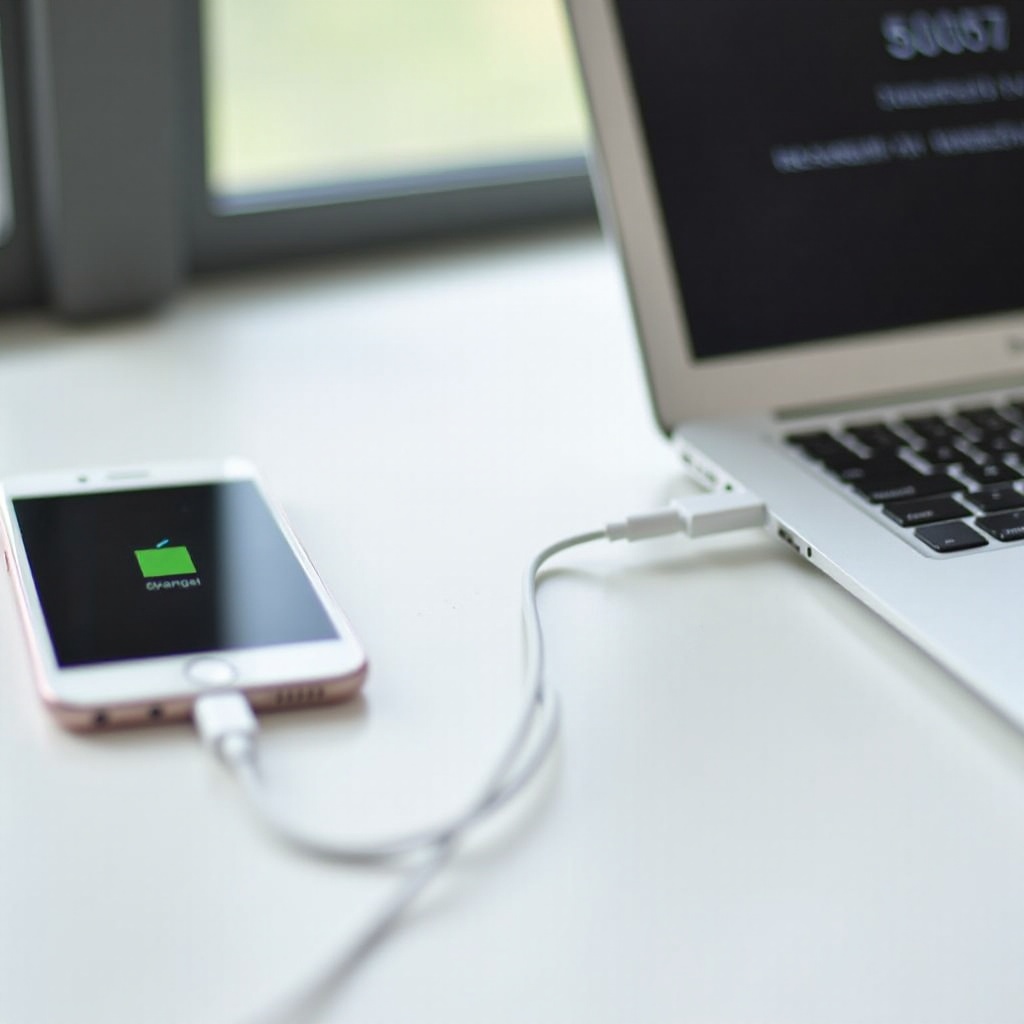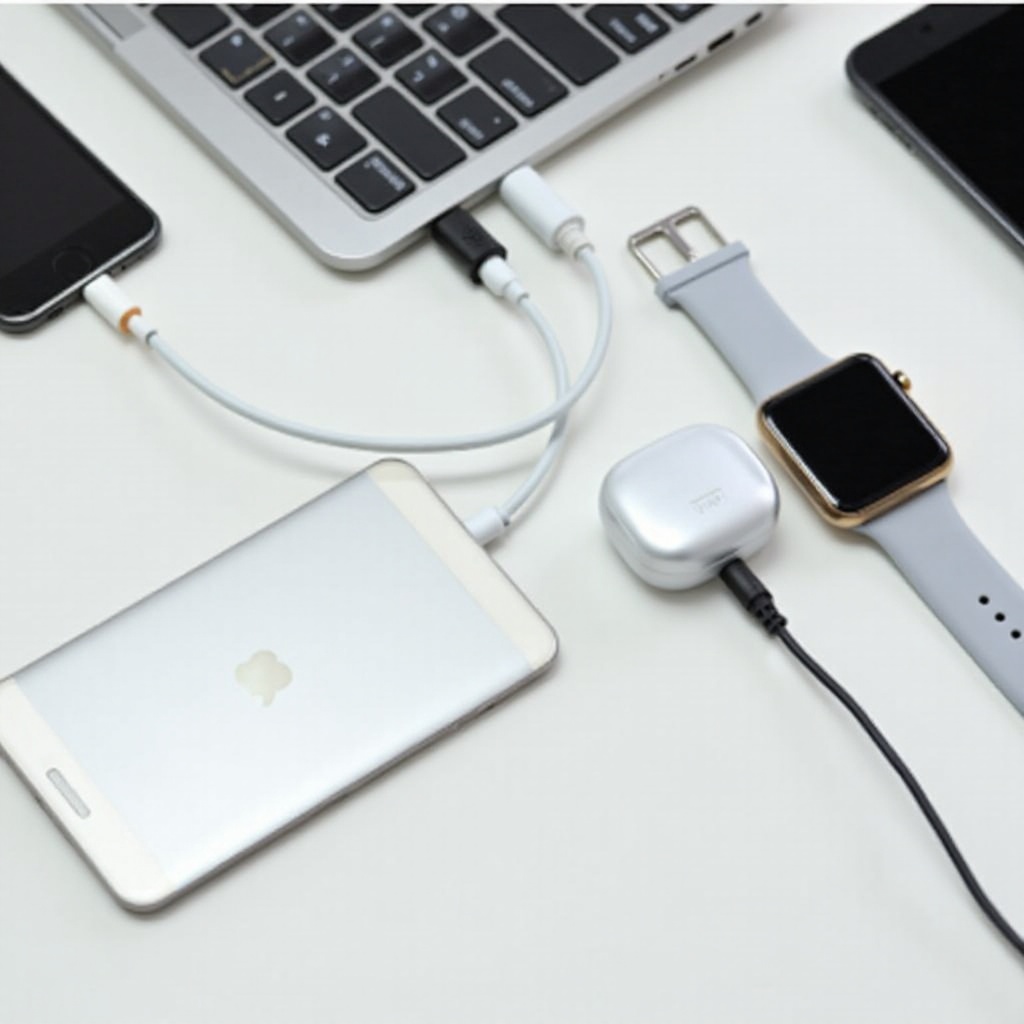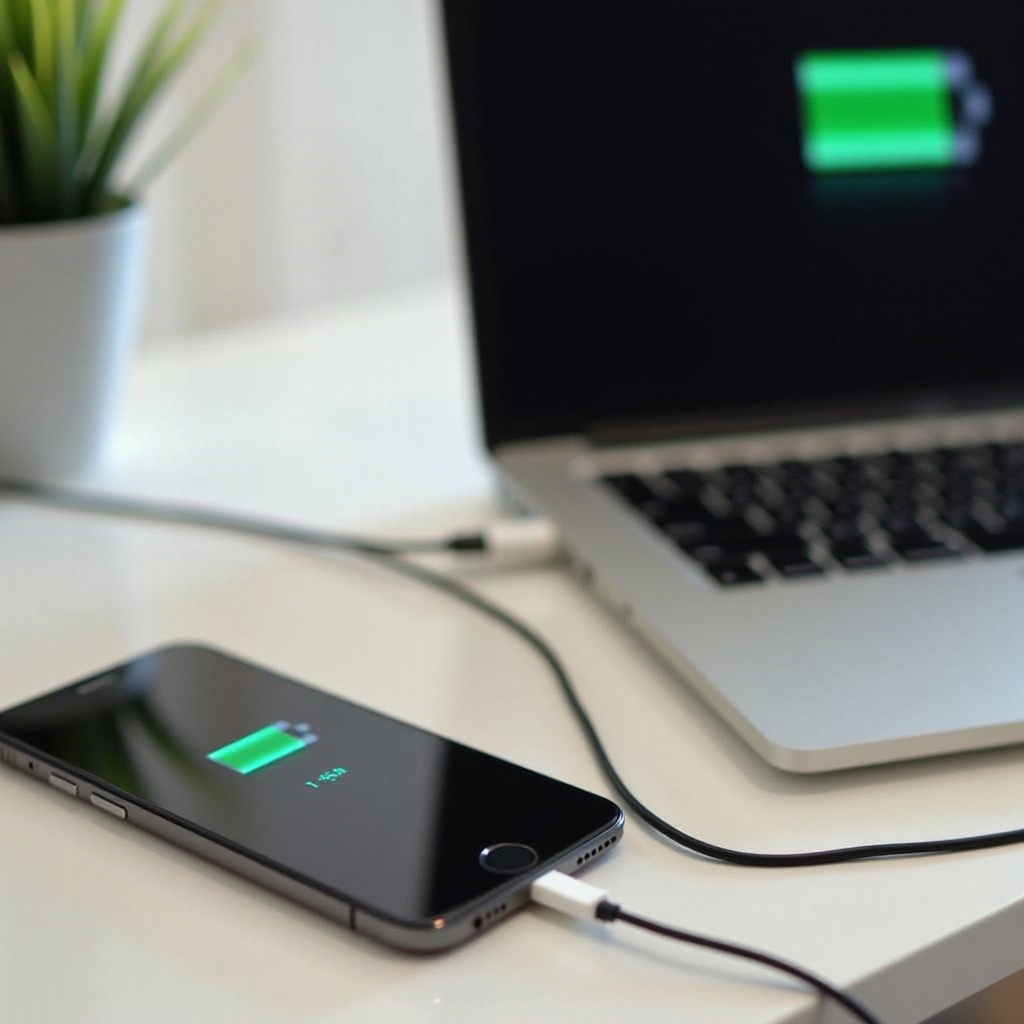Introduction
Charging devices from your laptop has become a common practice in our tech-driven world. Whether you need to power up your smartphone, smartwatch, or tablet while on the move or during a long commute, your laptop serves as a reliable power source. This guide explores various methods to charge your devices efficiently using your laptop.

Why Charge Devices from Your Laptop?
Charging devices from a laptop offers unparalleled flexibility and convenience. Laptops typically come with multiple USB ports, making them versatile charging hubs. This means you can charge your gadgets without needing additional power outlets, which is particularly useful when traveling or when power sources are limited. Moreover, relying on your laptop reduces the need to carry multiple chargers, thereby lightening your load and simplifying your life.
Types of Devices Compatible with Laptop Charging
It’s essential to know which devices can be charged from a laptop. Common devices include smartphones, tablets, eReaders, smartwatches, fitness trackers, and portable speakers. These devices generally come with USB cables that can be connected to laptop USB ports, making the charging process straightforward. Some newer laptops support wireless charging, allowing you to recharge compatible devices without a cable.

Methods to Charge Devices from Your Laptop
Charging devices from your laptop can be done primarily through two methods:
Using USB Ports
This method is the most common, involving USB Type-A or USB Type-C ports. By connecting your device to an appropriate USB port, you can charge it using the power from your laptop’s battery.
Wireless Charging (if Supported)
For devices with wireless charging capabilities, this method offers a cable-free alternative. Some modern laptops come equipped with wireless charging pads that allow you to place your device on top for charging.
Step-by-Step Guide: Charging Devices Using USB Ports
For a practical approach, here is how you can charge devices using the USB ports on your laptop.
Identifying the Available Ports on Your Laptop
First, you need to identify the USB ports on your laptop. Look for USB Type-A (rectangular) and USB Type-C (smaller, oval) ports. Knowing the port types will help you select the appropriate cable for your device.
Using USB Type-A Ports
- Connect one end of the USB cable to your device.
- Insert the other end into a USB Type-A port on your laptop.
- Ensure that the laptop is turned on to supply power to the USB port.
- Monitor the device’s charging status to ensure it’s properly connected.
Using USB Type-C Ports
- Connect the USB Type-C cable to your device.
- Plug the other end into a USB Type-C port on your laptop.
- Make sure the laptop is powered on for charging.
- Check the device’s charging indicator to confirm it’s receiving power.
Tips for Efficient Charging
To maximize charging efficiency, consider these tips.
Ensuring Sufficient Laptop Battery
Ensure your laptop’s battery is sufficiently charged. Charging multiple devices can quickly drain your laptop’s battery if it’s not connected to a power source.
Using the Right Cables
Always use quality cables compatible with your devices and laptop ports. Poor-quality or damaged cables can lead to inefficient charging or potential damage.
Monitoring Charging Speed and Power Output
Pay attention to charging speed and power output. Use the highest wattage port available on your laptop for faster charging, especially for power-intensive devices like tablets.
Troubleshooting Common Issues
Here’s how to address common charging issues:
Device Not Charging
- Check if the cable is securely connected.
- Verify that the laptop is powered on and the port is functioning.
- Try using a different USB port or cable.
Slow Charging Speeds
- Use a higher-wattage USB port.
- Close unnecessary applications on your laptop to free up resources.
- Ensure the cable is meant for charging, not just data transfer.
USB Port Issues
- Inspect the port for debris or damage.
- Restart your laptop as a quick fix.
- Update your laptop’s drivers to ensure compatibility with the device.
Advanced Techniques
For more advanced charging solutions, consider the following:
Using Laptop Docking Stations
Docking stations can provide additional USB ports and power outputs. They are equipped to handle multiple devices simultaneously and often offer faster charging capabilities.
Power Delivery Technologies (e.g., Thunderbolt 3)
Thunderbolt 3 and other power delivery technologies provide higher power output and faster charging times. These ports are ideal for charging larger devices like laptops and tablets.
Conclusion
Charging devices from a laptop is a practical solution, whether you’re on the go or at your desk. By understanding various methods and following our tips, you can efficiently keep your devices powered up.

Frequently Asked Questions
Can I charge multiple devices at once from my laptop?
Yes, you can charge multiple devices simultaneously, depending on the number of available USB ports on your laptop. However, this may result in slower charging speeds.
Does charging devices from my laptop harm its battery?
No, charging devices from your laptop will not harm the battery if done correctly. However, it may drain your laptop’s battery faster if it’s not connected to a power source.
What should I do if my device is not charging from the laptop?
Ensure the cable is secure, the port is working, and the laptop is powered on. Try using another USB port or cable and check for any software updates that may affect charging.

